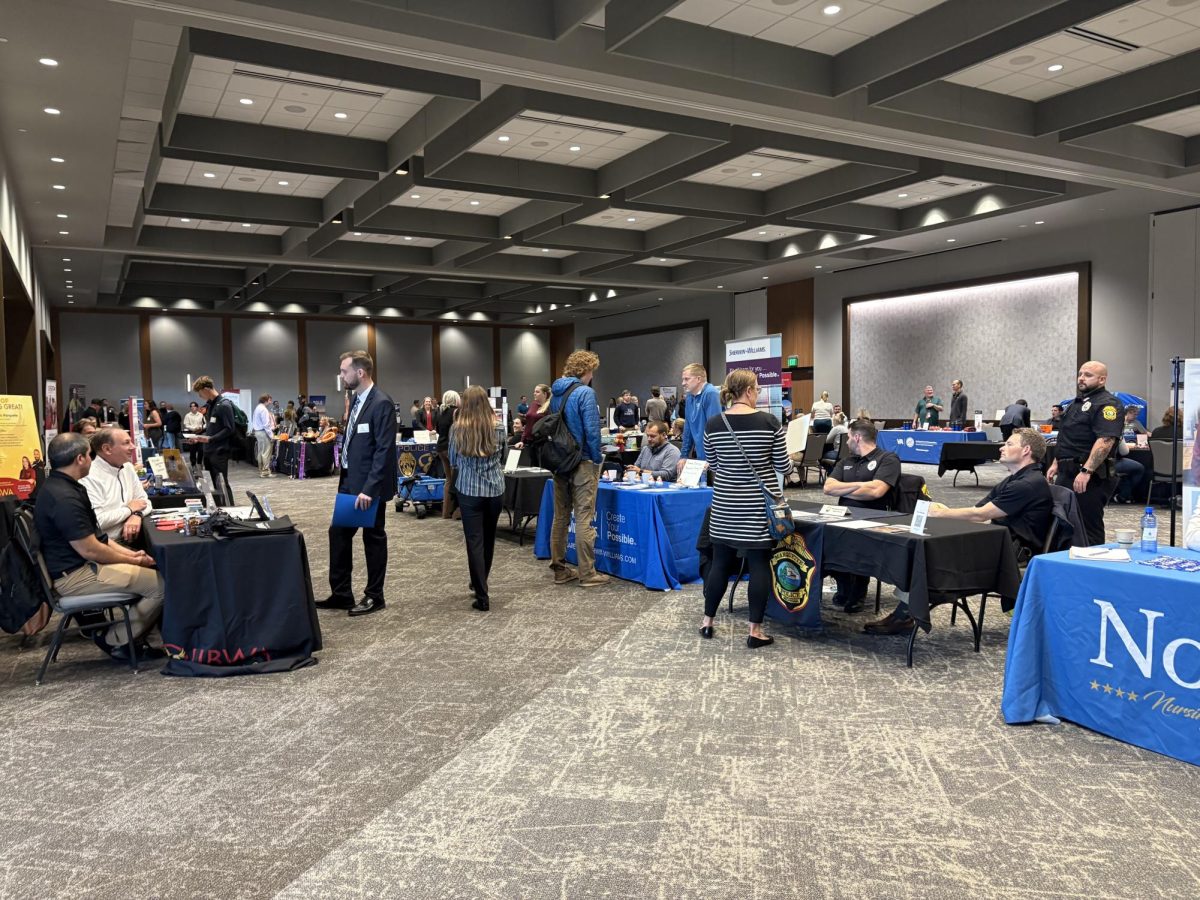President Les Wong brought up his 11-member cabinet and its benefits in the campus forum that was held Wednesday, Nov. 30.
The cabinet is a small team of employees from the President’s Council, which consists of 30 members. Wong chose people for the cabinet who have backgrounds and experience in policy, policy analyses and legislation.
“I needed a small, quick-moving team that could generate an institutional response to initiatives and queries from the governor, who has a habit for moving very, very quickly,” Wong said.
The members are Paul Lang, Gavin Leach, Cindy Paavola, David Haynes, Paul Duby, Jamal Rashad, Jill Compton, Sherri Towers, Art Gischia and Martha Haynes. President Wong’s executive assistant, Theresa Nease, also attends every meeting.
According to Wong, he chose the members based on experience. The team gives Wong a great view of all the functions of the university and is responsible for large proportions of the budget and/or large employee units, Wong said.
“They are all comfortable with data and asking good, hard questions about what we do and why,” Wong said.
According to Cindy Paavola, director of marketing and communication, the cabinet has developed a response required by the department of budget, management and technology.
“While the budget request is an annual request by the state and has been for decades, this year there was a new portion to the annual budget request that related to ideas tied to possible metric for a university’s funding formula,” Paavola said.
President Wong’s 11-member cabinet held its first meeting Oct. 31 and have had a couple since. In the meeting, the cabinet discussed and analyzed the impact of various funds on Northern.
“Members of the cabinet were assigned tasks to research and study this information before we sent out official state budget request package to Lansing,” Paavola said. “So far, that’s been our biggest completed task.”
According to Wong, the team can respond to requests from the key legislators as well as policy questions NMU gets from the state government’s senior staff.
Paavola said the members are learning more about the bills that could impact charter schools, Pell Grants and community colleges potentially offering bachelor’s degrees.
“Being proactive also reflects our desire to be a part of the solution,” Wong said. “I had no other governance outlets to do this important, quick and often intense work. Better decisions always come from collegial, consensus-driven work.”
According to Martha Haynes, executive director of the NMU Foundation, the 11-member cabinet is a pretty typical model for presidents of universities to use.
President Wong said he likes having the cabinet and it will complement the President’s Council in good ways. The President’s Council provides advice and consultation on very large issues, for example, the 15-percent budget cut that was recently enacted.
“The President’s Council also is effective in the review of policy and procedures and because these are important issues, it requires more time and deliberation to get it right, or at least as right we could get it,” Wong said.
Wong said he had been thinking about the idea of a president’s cabinet since last spring. He set a goal to create and put the cabinet in place by December 2011.
“A small, intense, swift-moving group complements the wisdom of a larger body whose deliberations are important,” he said.























